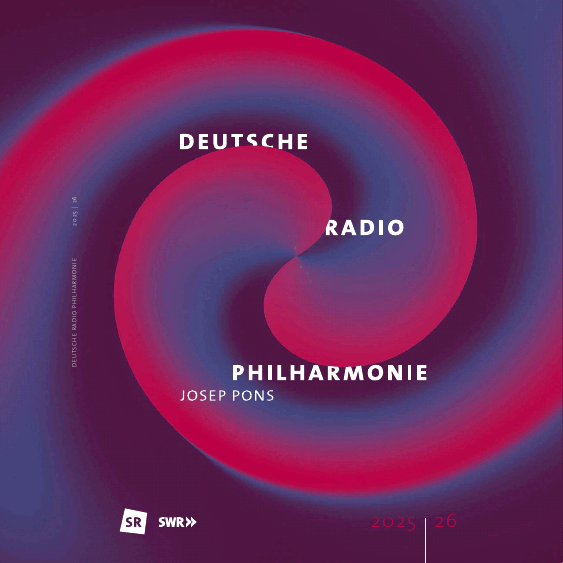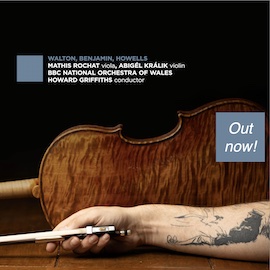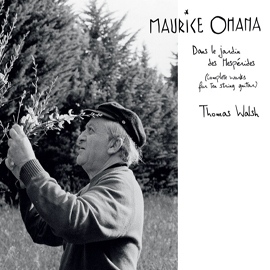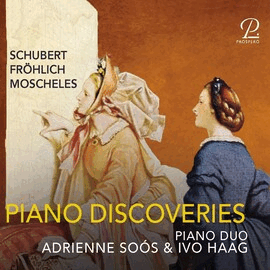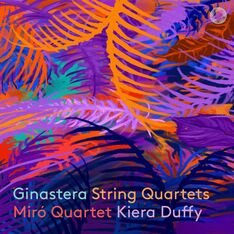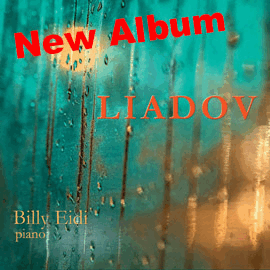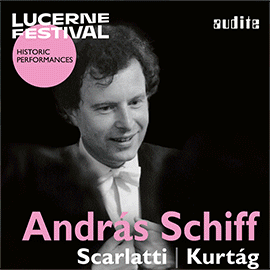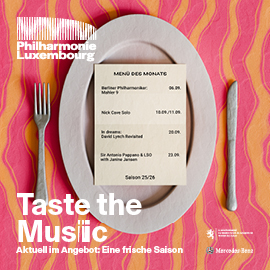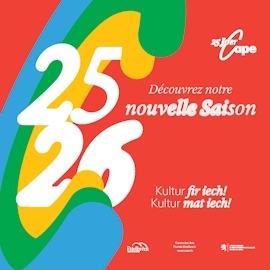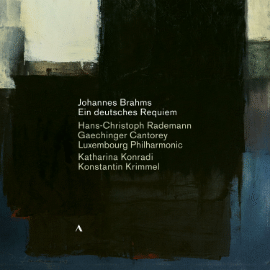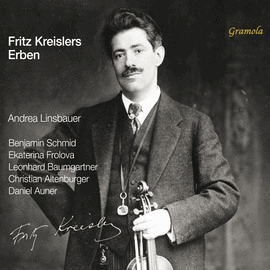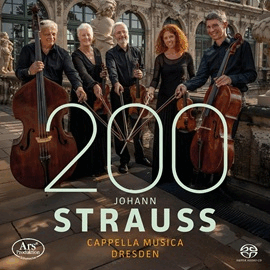Diese CD zeigt die drei Streichquartette des argentinischen Komponisten Alberto Ginastera (1916-1983) und gibt damit einen Einblick in die verschiedenen Schaffensperioden des Komponisten.
Das erste Quartett gehört zur Phase des Objektiven Nationalismus (1934-1948), das zweite ist dem Subjektiven Nationalismus (1948-1958) zuzurechnen, während das dritte dem Neo-Expressionismus (1958-1983) angehört.
Sie zeigen die schrittweise Abkehr von einem nationalistischen und folkloristischen Stil hin zu einem persönlicheren Stil mit immer noch unverkennbar lateinamerikanischen Wurzeln.
Das Miro Quartet macht eine Radiographie der Musik und schließt sie an eine 1000-Volt-Leitung an. Ihre Darbietungen sind entsprechend elektrisierend und umwerfend brillant.
Im durchwegs energetischen ersten Quartett bekommt der langsame Satz eine bewegende Expressivität.
Das zweite Quartett beginnt mit einem hier hektisch drängenden, dort sehr lyrischen und sehnsuchtsvollen Allegro rustico. Das Adagio zeigt durchaus Shostakovich-ähnliche Angstzustände, die in ein höchst beunruhigendes Presto Magico münden, welches die Miros als Nachtszene voller beunruhigender Klänge darstellen. Diese dauern im nächsten Satz an. Das Quartett endet mit einem dramatischen Furioso, das vom Miro Quartett mit Verve gespielt wird.
Das ist ein musikalischer Sturm, der wohl an die Grenze des technisch Machbaren geht.
Das dritte Quartett aus dem Jahre 1974 ist ungewöhnlich wegen der Besetzung Streichquartett plus Sopran. Ginastera hat darin Gedichte dreier spanischer Dichter des zwanzigsten Jahrhunderts vertont, Juan Ramón Jiménez, Federico García Lorca und Rafael Alberti. Nur der zweite Satz, Fantastico, ist ohne Gesang.
Das Werk thematisiert dem Booklettext zufolge « die transformative Kraft der Musik, die Intensität der sinnlichen Liebe, beängstigende Kriegsvisionen und eine tiefe, alles durchdringende Nostalgie ». Nach Ginasteras eigenen Worten enthält das Quartett « seltsame Klänge und kontrastierende Atmosphären … es entwickelt sich in einem halluzinierenden Klima ». Ginastera schreibt weiter: « Im dritten Streichquartett habe ich mich einer Technik bedient, die auf dem Zusammenspiel von festen und variablen Strukturen und auf der Schaffung und Organisation eines mehrdimensionalen Raums basiert, in dem sich unendliche Phänomene – und entsprechende Resonanzen – aus dem sich ständig verändernden Klanguniversum entwickeln. »
Das Quartett wird vom Miro Quartet und der Sängerin Kiera Duffy hoch dramatisch und emotional aufgeladen interpretiert. Die Sängerin beeindruckt mit ihrer charakteristischen, sehr sinnlichen Darstellung und einer tadellos geführten, sehr flexiblen Stimme. Die Interpretation ist, aufs Ganze gesehen, atemberaubend.
This CD presents the three string quartets by Argentinian composer Alberto Ginastera (1916-1983) and thus provides an insight into the composer’s various creative periods.
The first quartet belongs to the phase of Objective Nationalism (1934-1948), the second to Subjective Nationalism (1948-1958), while the third belongs to Neo-Expressionism (1958-1983).
They show a gradual move away from a nationalistic and folkloristic style towards a more personal style with still unmistakable Latin American roots.
The Miro Quartet makes a radiography of the music and connects it to a 1000 volt line. Their performances are suitably electrifying and stunningly brilliant.
In the thoroughly energetic first quartet, the slow movement takes on a moving expressivity.
The second quartet begins with an Allegro rustico that is hectic and urgent here and very lyrical and full of longing there. The Adagio shows Shostakovich-like anxiety, which leads into a highly troubling Presto Magico, which the Miros depict as a night scene full of unsettling sounds. These continue in the next movement. The quartet ends with a dramatic furioso, played with verve by the Miro Quartet.
This is a musical storm that arguably pushes the boundaries of what is technically possible.
The third quartet, composed in 1974, is unusual in that it features a string quartet and a soprano singer. Ginastera set poems by three 20th-century Spanish poets to music: Juan Ramón Jiménez, Federico García Lorca, and Rafael Alberti. Only the second movement, Fantastico, is without vocals.
According to the booklet, the piece explores « the transformative power of music, the intensity of sensual love, frightening visions of war, and a deep, pervasive nostalgia. » Ginastera described the quartet as containing « strange sounds and contrasting atmospheres…it develops in a hallucinatory climate. » Ginastera continues: « In the Third String Quartet, I have used a technique based on the interplay of fixed and variable structures, as well as the creation and organization of a multidimensional space. In this space, infinite phenomena—and their corresponding resonances—develop from the constantly changing universe of sound. »
The Miro Quartet and singer Kiera Duffy interpret the quartet in a highly dramatic and emotionally charged manner. The singer impresses with her sensual performance and impeccably controlled, flexible voice. Overall, the performance is breathtaking.



